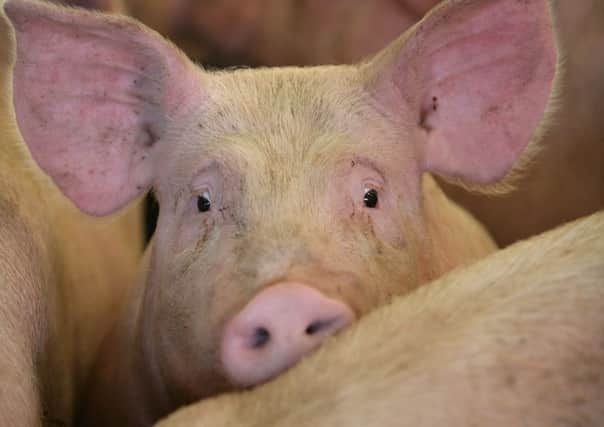Outrage as pigs shot for blood splatter experiment


The government-funded Institute of Environmental Science and Research said the pigs were sedated and treated humanely.
The scientists said their analysis is important in understanding human shooting deaths and could help in criminal cases.
Advertisement
Hide AdAdvertisement
Hide AdThe study, published in July in the International Journal of Legal Medicine, involved researchers from the institute as well as two public New Zealand universities. It describes how five pigs were shot from close range with a Glock semi-automatic handgun to record the back-spatter of blood, bone and brain material.
According to the study, the research was meant to examine the “biomechanical basis for backspatter” of gunshot wounds to the head, it noted – “five live pigs and several slaughtered pigs were shot using either 9 × 19 mm, 115 grain, full metal jacketed ammunition or .22 long rifle, 40 grain, lead, round-nose ammunition. A high-speed camera was used to record the entrance wound formation and backspatter”.
The group People for the Ethical Treatment of Animals (Peta) said the experiment was unnecessary because pigs are fundamentally different from humans and better results could be achieved using mannequins or computer modelling.
“These incredibly violent experiments are entirely indefensible, given their cruelty, inapplicability to humans and the superior non-animal research methods that are available,” said Justin Goodman, the animal rights group’s US director of laboratory investigations. The group has sent letters to the institute as well as the University of Otago, where the study was conducted, and the University of Auckland, which contributed research, urging them to stop such experiments.
Mr Goodman said using live animals for forensic science experiments is not as common as it used to be.
Keith Bedford, the general manager responsible for forensic science activities at the institute, said that it uses models and simulations wherever possible, but that in this particular experiment could not get the results it needed any other way.
“It goes to the ability to provide reliable, and the most informative, evidence in a court case,” he said. “It may be critical in protecting someone’s liberty.”
He said the organisation had no plans to carry out similar experiments using live animals, a point that the animal rights group welcomed.